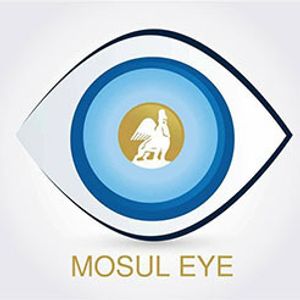I come from a city where Jews, Christians, Yezidis, and Muslims of different sects once lived together in a unique coexistence,
For 4000 years, my city was a city of culture, coexistence, and life. The damage caused by its occupation by ISIS (Islamic State) has been immense. Mosul was always a city with a big heart, a home to all of its children.
In their occupation of my city, ISIS followed a familiar pattern of violence and oppression. They recruited spies in the community so people stopped trusting each other. They weaponized history to advance their narrative. And then they took their terror to another level. They displaced Christians, enslaved Yazidis, killed Shia, killed Sunnis. They carried out the systematic destruction of Mosul’s identity. When they forced the city’s non-Muslim inhabitants to flee, they also destroyed their heritage in an effort to remove them from the city’s history. Then came the destruction of ancient Assyrian and cultural sites. After this brutality against Mosul’s non-Islamic history, they shifted to the Muslim community, where they began to systematically destroy Islamic archaeological sites, as well as museums, libraries and manuscripts. They destroyed the history and heritage of ALL of Mosul’s communities in an attempt to replace it with their own version of history. They forced women into captivity.
Life in the Mosul I once knew came to a halt. We stopped playing music. Cultural activities were banned. We stopped asking questions, even to ourselves. And everything became black, like their flags. Color, beauty, local dress, the arts––all disappeared as residents were forced into submitting to the group’s codes for appearance and society. ISIS aimed to smash apart the ancient bonds of coexistence between Mosul’s communities, as they smashed apart ancient statues. They imposed new social classes based upon Jihadist loyalty and violence.
For three years from 2014, Mosul was under the rule of terror. There were beheadings, whippings, heads broken by stoning, bodies thrown from buildings and horrific, medieval forms of torture in the prisons. I chronicled the brutality and destruction that took place, and one day will publish a history of what happened here, in all its horror. I shall call it “the horrible history of the occupation of Mosul by Da’esh.”
The room where I wrote my journal online that became known to all as Mosul Eye was just one thin wall away from the house where a senior ISIS fighter lived! There I sat documenting the group’s brutality to the world, close enough to the militants that it was possible to hear them speak. As a scholar, it was my mission to deconstruct their historical narrative, despite the great danger of doing so. Writing history under such a totalitarian ideology was an act of resistance to the group’s destruction of Mosul’s multicultural identity and heritage.
The revival of Mosul's heritage will reveal keys to humanity’s resistance against violence and division. It will reveal that the only way to live together is by believing in diversity as a mosaic, where each distinct piece is integral to the revelation of the whole, where any missing piece will in the end rob all of their shared destiny. The protection and promotion of this heritage in the contemporary culture will create safe spaces of communication between diverse groups of people. When you feel your identity is protected, you will act in a responsible way before the entire community.
My battle since June 2014 has been to reverse what ISIS has tried to implant in the consciousness of Mosul’s residents with the only weapon I have as a historian––writing history. The social, cultural and historical destruction wrought by the group will impact the city for centuries to come. Documenting history in such a context is a battle for knowledge: to develop the critical thinking capacity of the individual as a resistance to tyranny and to protect knowledge for the future. Now that ISIS has gone, I hope a more inclusive history of the city can be documented, one that’s been missing for many decades.
Despite all the destruction, human and tangible, there are many green shoots, signs of hope among the youth, who, in many cases are for the first time exploring the history of their city and its surroundings, places they never knew of or even thought to visit before! They need concrete support to grow this yearning into tangible actions that progress their lives and safeguard a better future. This makes UNESCO’s Revive the Spirit of Mosul initiative especially unique in its possibility to rise to the challenge and build cooperation directlywith the community in all its diversity, especially its young people.
Mosul always survives. As the medieval geographer Ibn Jubayr (1145-1217) wrote: “The city is a large and ancient one, fortified and imposing, and prepared against the strokes of adversity.” This I can only attest to again and again, the resilience of my city.
To those who are dedicated to culture, education and heritage, I invite you to visit my city of Mosul.
